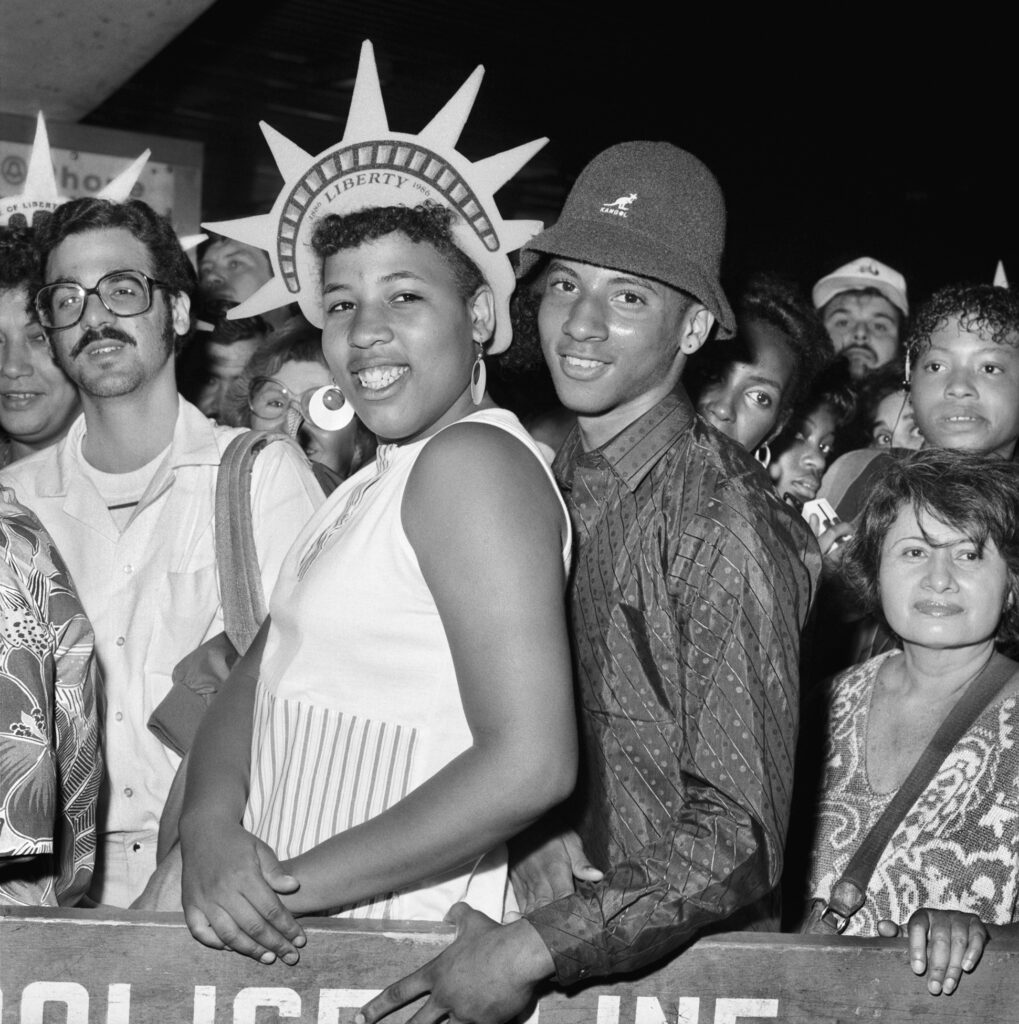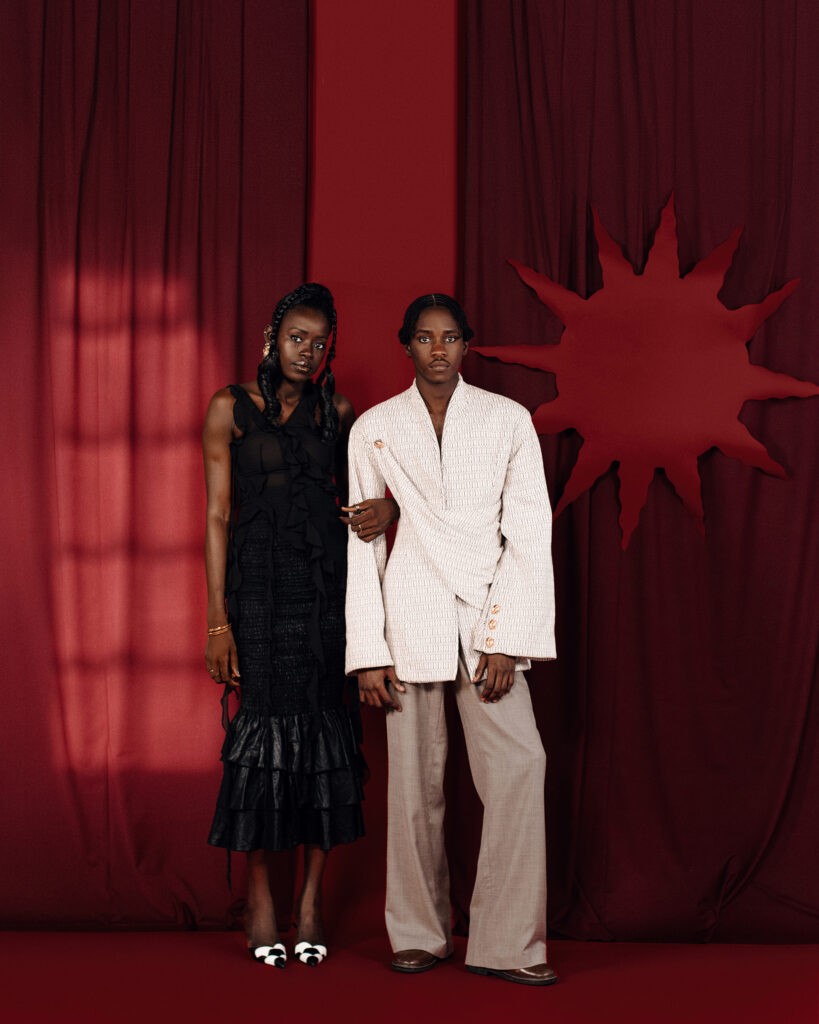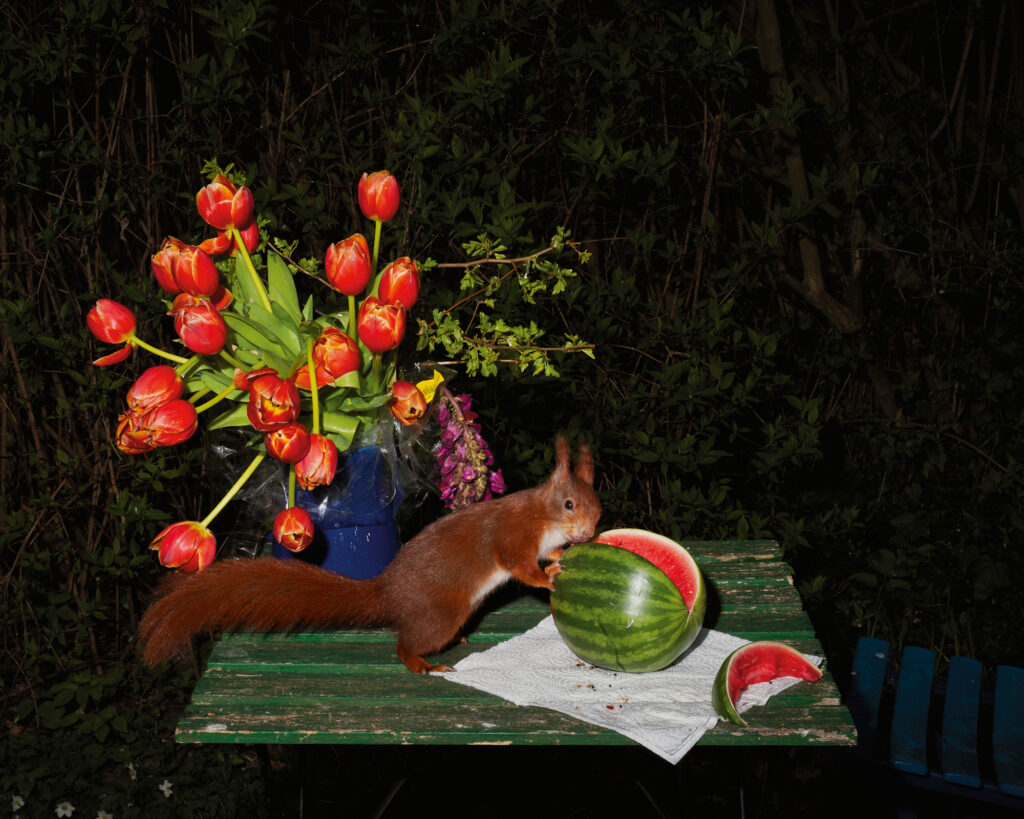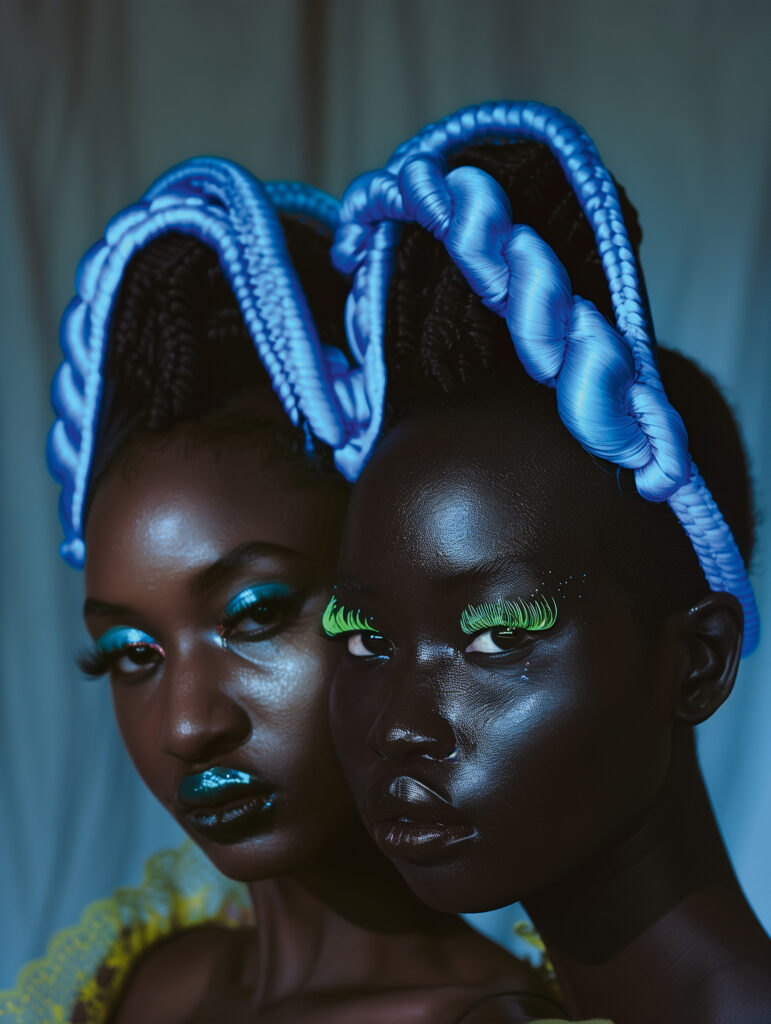Portfolios
How Gina Osterloh’s Photographs Flirt with the Limits of Recognition
In her self-portraits and staged images, the Filipino American artist explores the borderlands of identity.

In Gina Osterloh’s photographs, there are subjects but no faces. Bodies are pitched at sly angles or obscured by sundry materials, boxed into sparse rooms with impossible vanishing points. These abstract scenes and their solitary figures are usually staged more as tableaux than conventional portraiture, but even to wonder at which point the former arrangement becomes the latter is to ask: Where, in this image, does the subject end and the world begin?
If visual abstraction is about flirting with the limits of recognition, testing our ability to name what we see, in Osterloh’s work it becomes a way of questioning how we parse identity at such thresholds of perception. Her interest in what she has called “the flickering between legibility and illegibility” is informed by her experience as a mixed-race Filipinx American raised in Ohio, but her images rarely contain overt markers of identity. Only those in the series Somewhere Tropical (2005–6), one of which is on the cover of this issue, exhibit any cultural specificity: figures clad in denim and camouflage assert the textiles of Americana against a saccharine sunset in the frond-filled tropics.
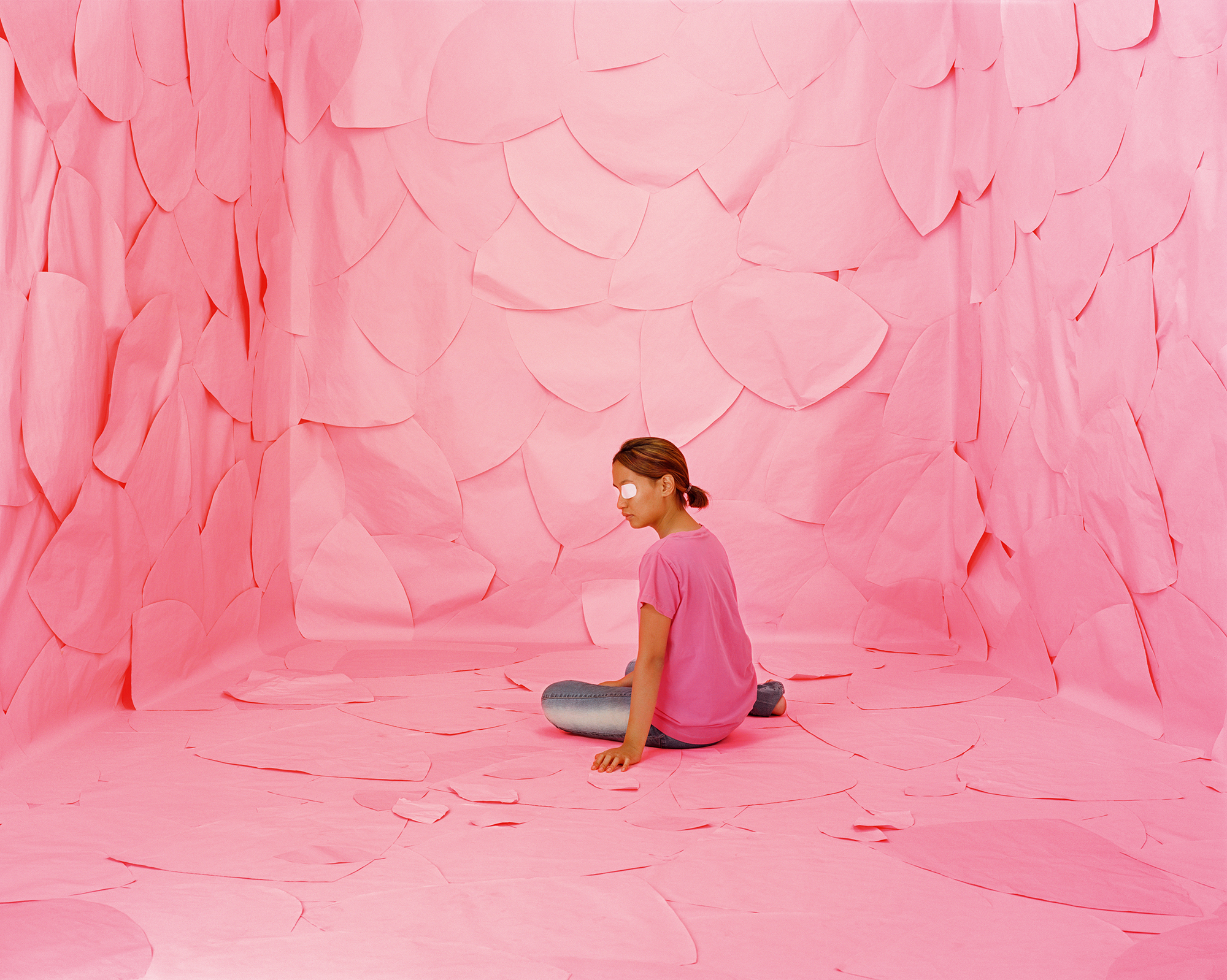
Gina Osterloh, Blind Rash, 2008
Made during graduate school at the University of California, Irvine, Osterloh’s early images from Somewhere Tropical introduce her fascination with camouflage as a way of testing boundaries—of an unsteady self, of a subject’s racial legibility. She’s drawn to the edges of physical materials, where one texture guards its unity against another; she has been animated by a “desire to intimately press and touch photographic space itself,” she told me recently. Perhaps it’s unsurprising that she first came to art making through performance and installation, modes to which she occasionally returns.
Aperture Magazine Subscription
0.00
Paper has long been Osterloh’s material of choice: in the piece Rash Room (2008), it is used as an epidermal extension, a “membrane, a kind of second skin,” the artist says. It becomes a textural surface for mark making, too, pushed to abstraction in her many drawing series or entwined with performance in installation projects including Group Dynamics and Improper Light (2012). Even as Osterloh cycles through more tactile modes of practice—recently, steel sculptures—what persists is her use of photography as a tool for staging visual contradictions, a strategy for playing with the perceptual mysteries of depth and flatness.
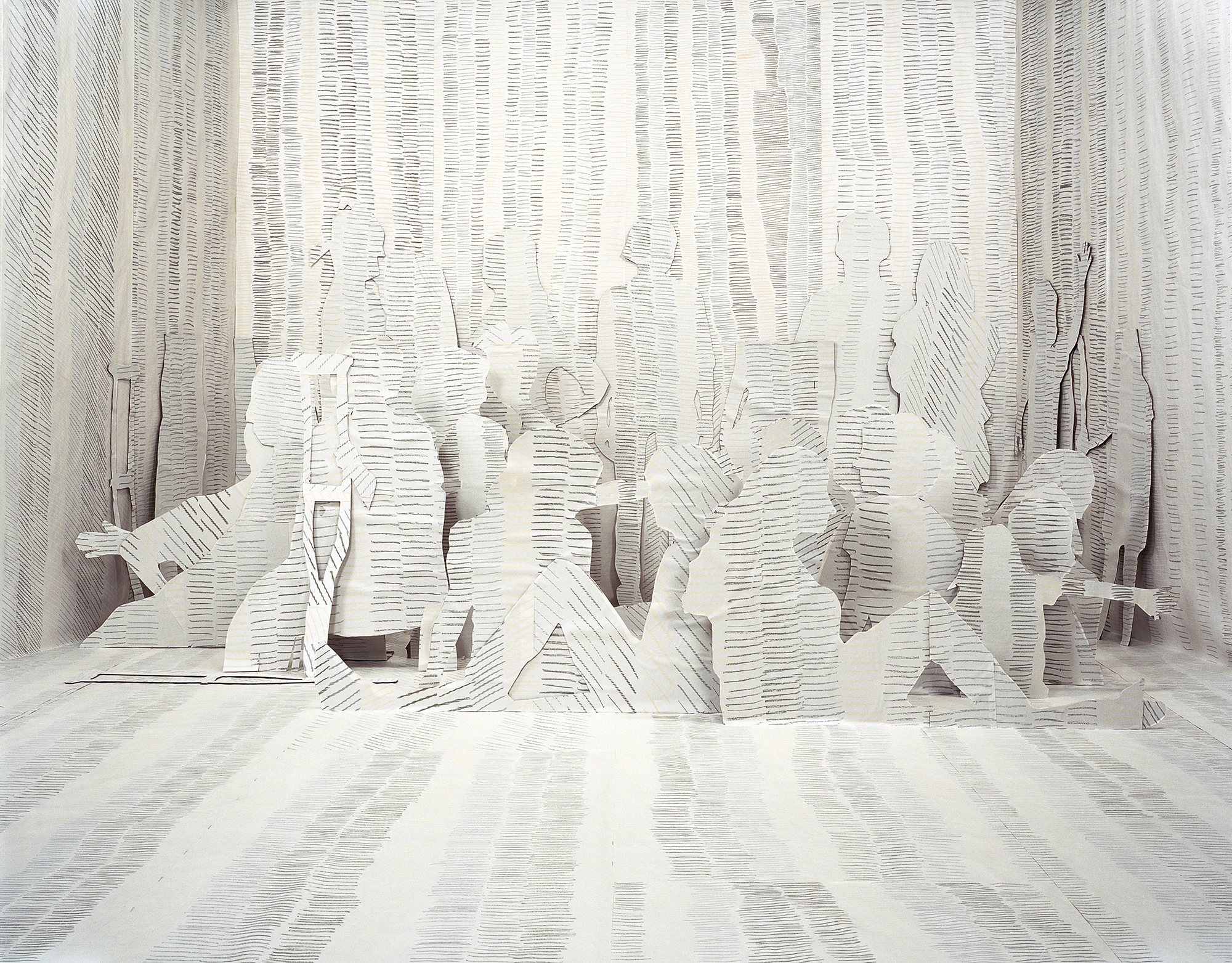

All photographs courtesy the artist and Higher Pictures, New York
In Holding Zero (2020), for instance, a gridded backdrop invokes constraint while its freehand lines tease at sketchy disorder. Centered in these pictures is another paradox: Osterloh’s figure is anonymized and doubled, one mummified in black tape and reinserted in the frame as a printed mount while the other hides behind its monstrous duplicate, an absence that becomes a kind of shield. Here, Osterloh wanted her entire body facing the camera, “cloaked in refusal but also wrapped in something that is protecting it, preserving it,” she explains.
This, she reminds me, is what photography does: it flattens, captures, regulates—but also protects, preserves. What riper medium is there for exploring such perceptual borderlands, when the very act of framing is also a kind of touch, a means of pushing subjects and forms into one another and seeing what they can withstand? The photographs in Pressing Against Looking (2019) are perhaps the keenest expression of this approach: Osterloh’s figure, sitting fully frontal, bars her vision with a long pole in each hand, two stark vectors slicing up the frame. Eyes pressed against their blunt heft, she thwarts her own vision along with the viewer’s, denying us the intimacy of seeing her seeing. The camera and its frame might press her into a structure of visibility, but she, too, presses, against its gaze and our insistence on making her legible.
This article originally appeared in Aperture, issue 251, “Being & Becoming: Asian in America.” Gina Osterloh: Mirror Shadow Shape is on view at the Columbus Museum of Art, Columbus, Ohio, through October 8, 2023.






